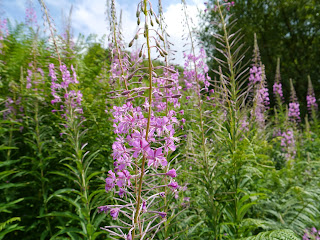We are all perhaps familiar with the Betterwear catalogue dropping through our letterbox. The catalogue is full of gadgets that we have probably managed perfectly well without, but when we see them we suddenly can't live without them.
In the 1950's and 60's the consumer society was just in its infancy. Shops had very few luxuries so when the Kleeneze Man arrived at our front door, not with a small catalogue, but with a rather large suitcase and an armful of brushes and mops, it was an opportunity for housewives to spoil themselves by purchasing a new sweeping brush, floor mop, or tin of polish. The gentleman was always dressed very smartly, generally with a trilby hat, suit and gaberdine mackintosh. (I never did see a Kleeneze lady!)
 My favourite free gift, as a small child, was a small round tin of polish around the size of an old penny. I can't really remember doing much with it, but it was lovely just to have a gift from a strange man who came to the door. Can't really see mothers agreeing to that these day.
My favourite free gift, as a small child, was a small round tin of polish around the size of an old penny. I can't really remember doing much with it, but it was lovely just to have a gift from a strange man who came to the door. Can't really see mothers agreeing to that these day.
Anyway, one Christmas they must have decided to be creative with their brush making machine. They brought out a group of small Christmas Trees.
Christmas tree decorations in those days were quite a luxury, and kept for many years. One of the first mass-produced decorations was made from flat metal stamped into shapes and spray-painted with metallic paint. A hole enabled them to be attached to the tree using wire, ribbon or thread.
Not quite as sophisticated as some of today's decorations, but they still have a charm.
In the 1950's and 60's the consumer society was just in its infancy. Shops had very few luxuries so when the Kleeneze Man arrived at our front door, not with a small catalogue, but with a rather large suitcase and an armful of brushes and mops, it was an opportunity for housewives to spoil themselves by purchasing a new sweeping brush, floor mop, or tin of polish. The gentleman was always dressed very smartly, generally with a trilby hat, suit and gaberdine mackintosh. (I never did see a Kleeneze lady!)
 |
| Kleeneze Christmas trees |
 My favourite free gift, as a small child, was a small round tin of polish around the size of an old penny. I can't really remember doing much with it, but it was lovely just to have a gift from a strange man who came to the door. Can't really see mothers agreeing to that these day.
My favourite free gift, as a small child, was a small round tin of polish around the size of an old penny. I can't really remember doing much with it, but it was lovely just to have a gift from a strange man who came to the door. Can't really see mothers agreeing to that these day.Anyway, one Christmas they must have decided to be creative with their brush making machine. They brought out a group of small Christmas Trees.
Christmas tree decorations in those days were quite a luxury, and kept for many years. One of the first mass-produced decorations was made from flat metal stamped into shapes and spray-painted with metallic paint. A hole enabled them to be attached to the tree using wire, ribbon or thread.

















































